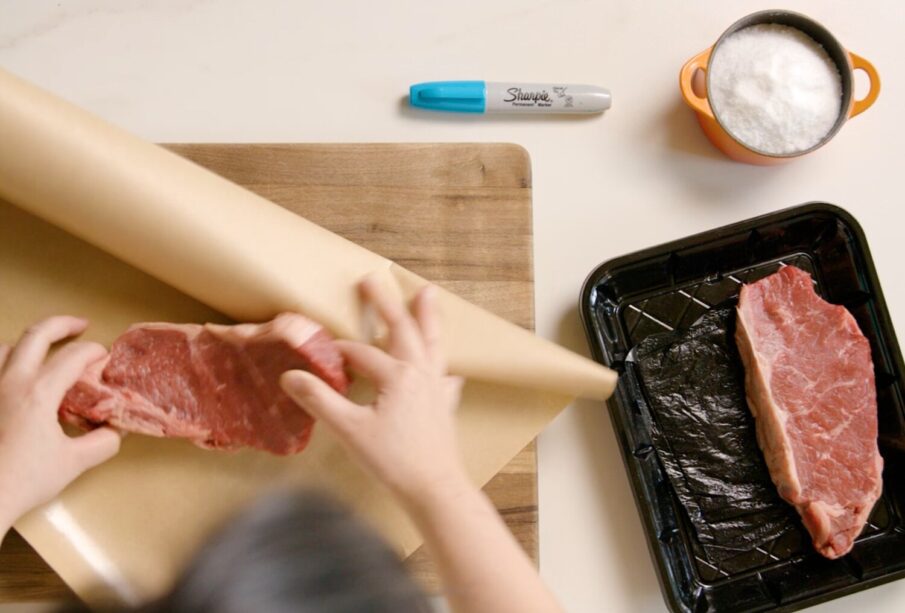How to Properly Store and Preserve Fresh Meat

Storing and preserving fresh meat correctly is crucial to maintaining its quality, flavor, and safety. Whether you purchase your meat from a local butcher, a supermarket, or through an organic meat delivery service like Farm Club, following proper storage techniques can help extend its shelf life and prevent foodborne illnesses. Here’s a comprehensive guide on how to properly store and preserve fresh meat.
1. Refrigeration
Short-Term Storage
For short-term storage, fresh meat should be kept in the refrigerator at a temperature of 34°F (1.1°C) to 40°F (4.4°C). Here are some tips to ensure optimal preservation:
- Remove Original Packaging: Transfer the meat from its original packaging to an airtight container or wrap it tightly in plastic wrap. This helps prevent exposure to air, which can cause the meat to dry out and spoil faster.
- Use the Coldest Part of the Fridge: Store meat in the coldest part of your refrigerator, typically the bottom shelf, to minimize temperature fluctuations when the door is opened.
- Separate Different Types of Meat: Keep different types of meat (e.g., chicken, beef, pork) in separate containers to avoid cross-contamination.
Monitoring Freshness
- Check for Signs of Spoilage: Before cooking, inspect the meat for any off smells, discoloration, or slimy texture. Fresh meat should have a clean, neutral smell and a firm texture.
- Use Within Safe Timeframes: Generally, uncooked poultry can be stored in the refrigerator for 1-2 days, ground meat for 1-2 days, and steaks or chops for 3-4 days.
2. Freezing
Long-Term Storage
Freezing is the best method for long-term storage of fresh meat. Here’s how to do it properly:
- Pre-Freeze Preparation: Remove the meat from its original packaging, pat it dry with paper towels to remove excess moisture, and wrap it tightly in plastic wrap or aluminum foil. For added protection, place the wrapped meat in a freezer bag or an airtight container.
- Vacuum Sealing: For the best results, use a vacuum sealer to remove all air from the packaging. This helps prevent freezer burn and extends the meat’s shelf life.
- Label and Date: Always label the packages with the type of meat and the date it was frozen. This helps you keep track of how long the meat has been stored and ensures you use the oldest meat first.
Freezing Times
- Beef and Veal: Can be stored in the freezer for up to 12 months.
- Pork: Can be stored for up to 6 months.
- Poultry: Whole birds can be stored for up to 1 year, while pieces can be stored for up to 9 months.
3. Thawing
Proper thawing is essential to maintain the quality and safety of frozen meat:
- Refrigerator Thawing: The safest method is to thaw meat in the refrigerator. This slow thawing process helps maintain the meat’s texture and flavor. Plan ahead, as this can take several hours to a day, depending on the size of the meat.
- Cold Water Thawing: For a quicker method, place the meat in a sealed plastic bag and submerge it in cold water. Change the water every 30 minutes to ensure it stays cold. This method is faster but requires more attention.
4. Additional Preservation Methods
Salting and Curing
Salting and curing are traditional methods that can preserve meat for extended periods without refrigeration. These methods involve applying salt or a curing mixture to the meat, which draws out moisture and inhibits bacterial growth10.
Dehydrating and Smoking
Dehydrating and smoking are other effective methods for preserving meat. These techniques remove moisture and add flavor, allowing the meat to be stored for months in airtight containers.
Conclusion
Properly storing and preserving fresh meat is essential for maintaining its quality and safety. Whether you’re using refrigeration, freezing, or traditional methods like salting and smoking, following these guidelines will help you enjoy your meat for longer periods. For those who prefer the convenience of home delivery, Farm Club organic meat delivery offers high-quality, sustainably sourced meat that can be stored and preserved using these methods. By adhering to these practices, you can ensure that your meat remains fresh, flavorful, and safe to eat.









